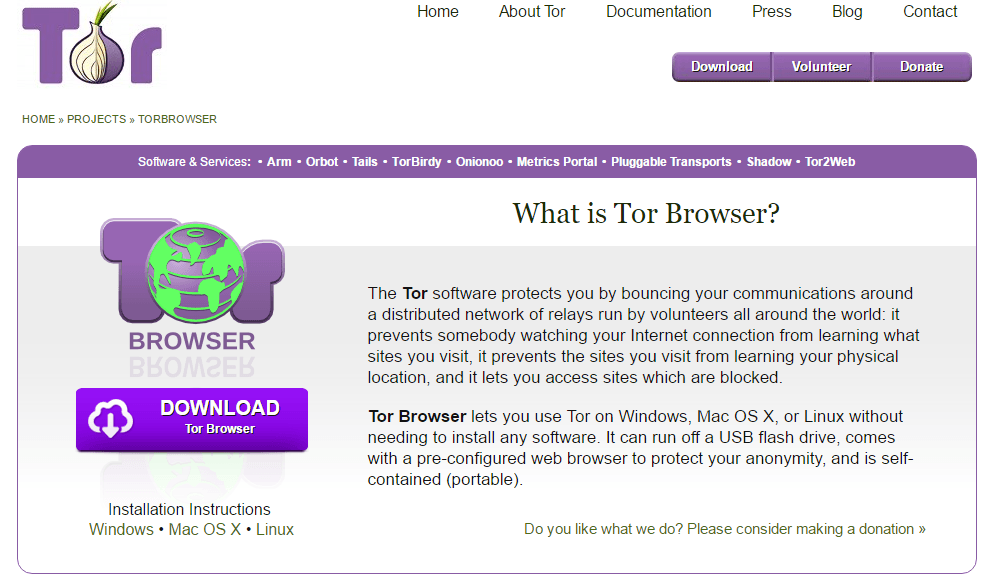Think you’ve seen the Internet? Chances are, you haven’t even scratched the surface.
You see, the entire Internet has two relevant parts: the surface web and the deep web. The surface web encompasses everything you can see or find through search engines like Google, Yahoo!, and Bing. These are websites like Facebook, Gmail, and Twitter that anyone can find using regular Internet browsers.
The deep web, on the other hand, includes everything else that search engines miss. Technically, newly created websites are considered as part of the deep web. The same goes for hidden pages that cannot be accessed through a link.
Reports indicate that the dark web—a portion of the deep web—is swarming with black marketplaces and other sites that engage in illegal activities.[1] This, in turn, has sparked the curiosity of Internet users all over.
Why should people care about the Deep Web?
According to studies, the surface web only accounts for 4% of the entire Internet,[2] which means the deep web is about 500 times bigger. That means you haven’t even seen a fraction of the Internet if you’ve only used regular browsers your whole life.
Call it curiosity, but many people are genuinely enticed about the idea of exploring the deep web. And although the deep web is often seen as the den of cyber criminals, there are actually a lot of interesting and useful things[3] hidden there.
Relaying your connection through the deep web will also enable you to access blocked sites. For example, if you’re in a country that censors connections to Facebook, then accessing the “dark web” version of the site will make the site accessible.
A word of advice, browsing the deep web requires extreme caution. To do it safely, you also need to use a special set of tools that will help you access the deep web.
Using the Tor Browser
First thing’s first, you should never enter the deep web without using a secure browser like Tor. It helps protect your privacy and anonymity by relaying your connection through “nodes” from all over the world.
Without a secure browser like Tor, you should just forget about browsing the deep web altogether. Tor further ensures your privacy by clearing your cache and cookies each time you close the browser. Additionally, deep web .onion sites cannot be accessed by browsers like Google Chrome, Firefox, and Safari.
Using a Deep Web Directory
Once you’re in the deep web, you’re probably confused as to where to go. A good place to start is an onion directory like the Hidden Wiki.
Deep web directories contain popular links that will bring you to useful sites. Other than deep web directory listings, do not click on any other link unless you’re absolutely sure where it goes.
Fortunately, deep web directories clearly describe the sites they link to. Although these probably won’t harm your computer, pay attention to their URLs since some of them engage in illegal activities – from selling fake IDs to hacking tools.
Lastly, never download or buy anything from the deep web, especially digital goods. Remember that the Tor browser can’t protect you if the malware finds its way into your hard drive.
Using Other Security Tools
As long as you use Tor and avoid clicking any suspicious links, you should be able to browse the deep web safely. But if you want additional protection considering the cyber security in mind, then you should consider using the following tools:
- Virtual Private Network – To further protect your anonymity, you can use a VPN, which masks your IP address from prying eyes. This is a must if you’re looking to explore deep web markets such as Alphabay.
- Tails – Tails is a live OS that can be booted straight from your desktop. It’s specifically designed to protect the user’s privacy and anonymity.
- Pretty Good Privacy – Pretty Good Privacy or PGP is an encryption service that is used for online communications.
Conclusion
The Internet is a massive place. While it’s a great learning experience for the tech-savvy, accessing the deepest recesses of the Internet comes with risks. If you’re thinking about starting your own deep web adventure, you should start by following the safety guidelines discussed above and research more so you have a solid understanding of it. Good luck and have fun!
Featured photo credit: Pixabay via pixabay.com













































